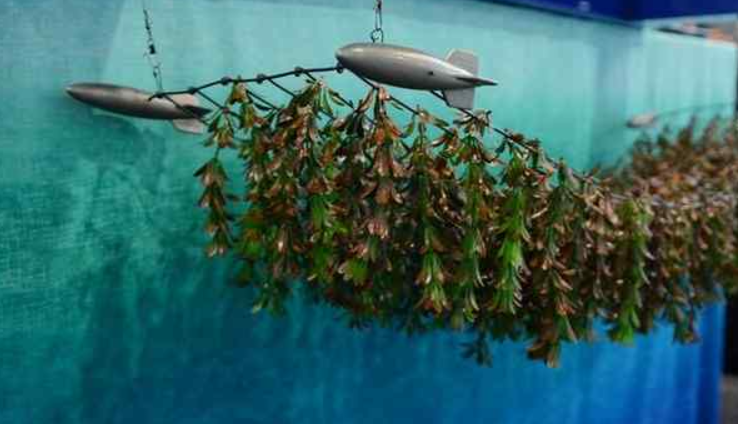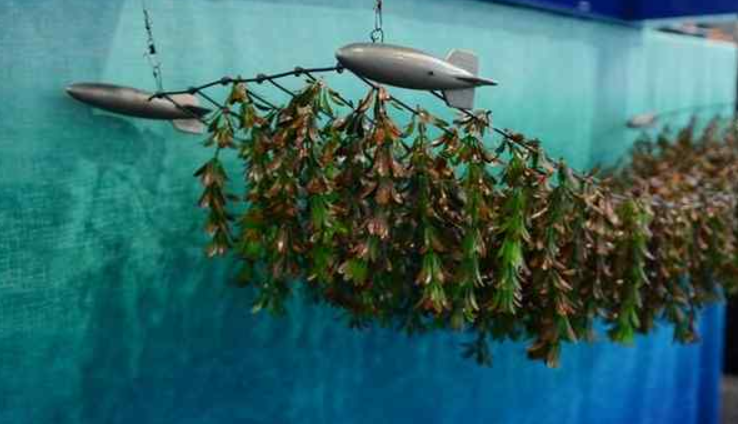Testing to begin on model of floating kelp beds that may one day create biofuel
 By Cynthia Washicko, LA Daily News
By Cynthia Washicko, LA Daily News
Lines of kelp, floating along the waves of the Pacific with help from drone-powered submarines, harvested, processed and turned into biofuel — that’s the vision some researchers and bioenergy company officials are hoping to make a reality.
Their goal is still a long way off, but it will start this year with a scaled-down test off the coast of Catalina Island. If successful, growing kelp in the ocean could help resolve the large-scale problem of diverting farmland or crops for biofuel, officials said.
Researchers at the USC Wrigley Institute for Environmental Studies will carry out a project proposed by Marine BioEnergy, a company focused on developing kelp as a source of biofuel, to grow lines of the plant as an eventual fuel source.
GROWING CHALLENGES
One of the challenges the project hopes to address is how to grow kelp on the open ocean. The plants spring up naturally along the coast, where deep water colliding with the shoreline shoots nutrients normally found in the depths of the ocean up toward the surface, said Cindy Wilcox, president and co-founder of Marine BioEnergy.
Once those nutrients hit shallow depths, where sunlight can make its way through the water, an environment is created where kelp can grow.
“As you hit cold water that’s an indication that … nutrients are going up and the kelp can take advantage of that,” she said.
Recreating the effects of that environment will be a key part of the plan to grow kelp as a biofuel, and a focus of the experimental project off Catalina. Two sets of kelp lines will be the basis of the research off the island’s northeastern coast, roughly half a mile from Howlands Landing. One will be anchored to the seafloor and left to float at a set depth.
The other will be raised and lowered to recreate the mix of nutrients and sunlight kelp needs to flourish, Wilcox said. At night, the lines will be lowered to more than 100 meters below the surface, where deep, cold waters offer nutrients the plants need. Then, during the day, they’ll be raised up to near the surface, where sunlight can filter through the ocean water to reach the kelp.
The first test will be to determine whether the kelp can survive the changes in pressure and environment that come with moving it up and down several hundred feet each day, Wilcox said.
It’s not clear yet what effects that change in environment will have on the kelp, said Tom Ford, executive director for The Bay Foundation and self-described “kelp freak.”
“It’ll be interesting to see how that may affect the … anatomy of these kelp plants,” he said.
LONG-TERM PLAN
The eventual goal is to develop floating farms scattered throughout the Pacific. Submersible drones would tug lines seeded with kelp plants, dragging the entire system down to the deep, nutrient-rich waters during the night, and floating it back up to shallow waters to take advantage of the sunlight during the day.
Then, the drones could tow the kelp to waiting ships, which would harvest the kelp and turn it into biocrude, the basis for biofuel.
BUILDING ON PAST RESEARCH
The test project, funded with a more than $2.1 million grant from the Department of Energy’s Advanced Research Projects Agency – Energy, will be carried out over roughly the next two years. It cleared the Coastal Commission last week and looks to be headed for a start date this fall, Wilcox said.
Once the project begins, it will likely be 2019 before the kelp can be harvested and sent off to be made into biocrude, Wilcox said.
The project, however, could hit a snag moving from the Catalina test to the full-scale production, Ford said. He’s seen similar issues with other plans, where a test run goes well, but the larger effort runs into unforeseen problems, he added.
Ford said when he first heard about the project he was excited to see a new twist on an old idea. Researchers funded by the U.S. Navy in the 1970s first looked into the idea of raising kelp as a potential source of biofuel during the OPEC oil embargo that led to gas shortages in the U.S.
A 2008 report described the attempts, which included using floating kelp farms, largely as a failure — the farms broke apart in the ocean and the plants were lost. Despite that, the early research gave a basis for Marine BioEnergy’s plan, Wilcox said.
Now researchers are taking some of the data from those trials and combining it with modern technology to hopefully make a success of a similar plan nearly 40 years later, she said.
‘CONTRIBUTING TO THE REMEDY’
Kelp as a biofuel source provides a host of potential benefits. Unlike other biofuel sources, it wouldn’t compete for land space with other crops or agricultural products, according to the Coastal Commission report on the project.
The plant also absorbs some of the carbon dioxide coming from the atmosphere and into the ocean, an added benefit to growing the plants as fuel, Ford said.
“You’re contributing to the remedy while you’re creating this resource we can use as a fuel,” Ford said.
The kelp could also help address ocean acidification on a local scale, and the farms would likely benefit other aquaculture as the kelp deteriorates and animals like oysters and clams feed off the remnants, he said.
“We can couple them together and, all of a sudden, kelp being grown for biofuel can also support aquaculture,” he said.
Wilcox added that the logistics of developing the full-scale plan, including building the drones and other elements, could bring jobs to coastal communities struggling from a decline in the fishing industry.

